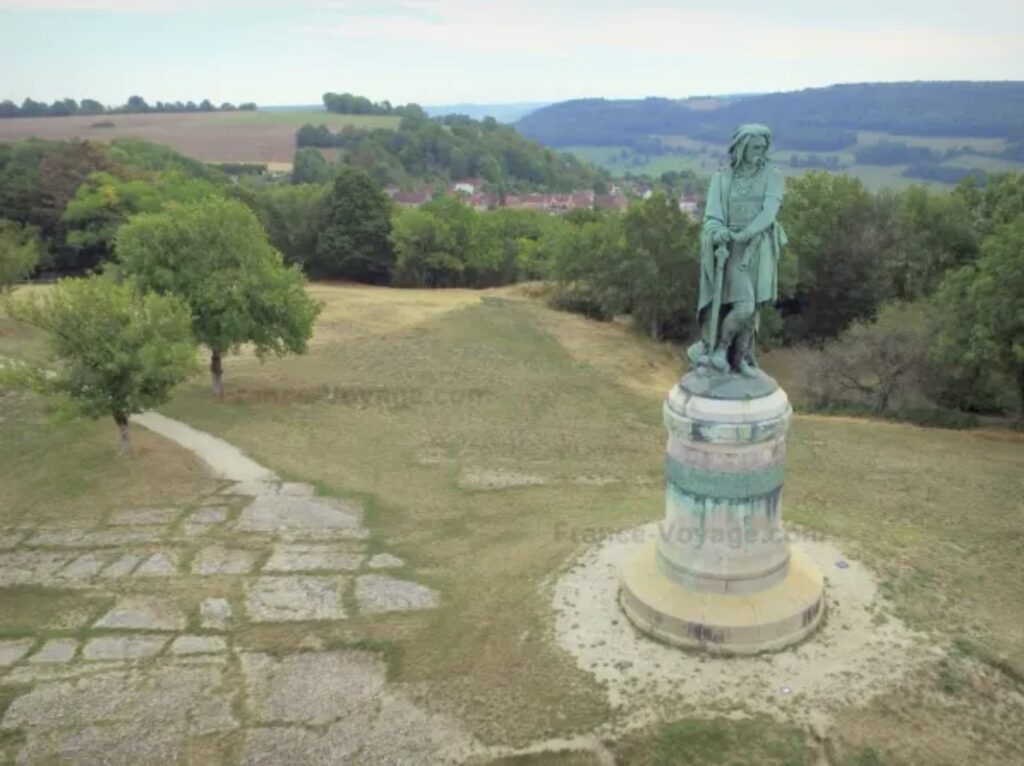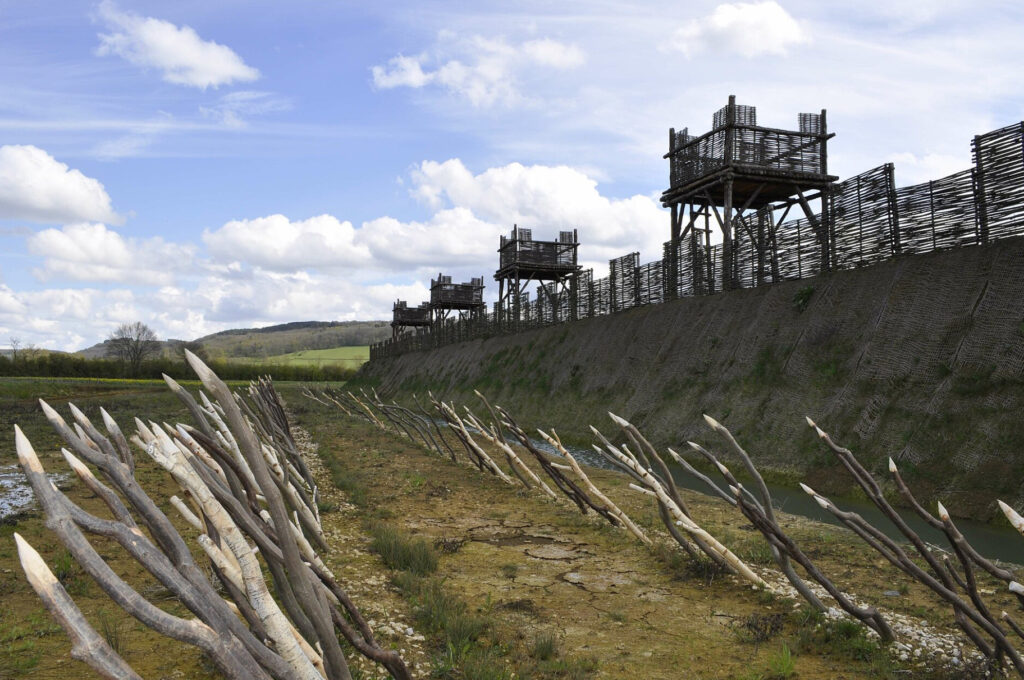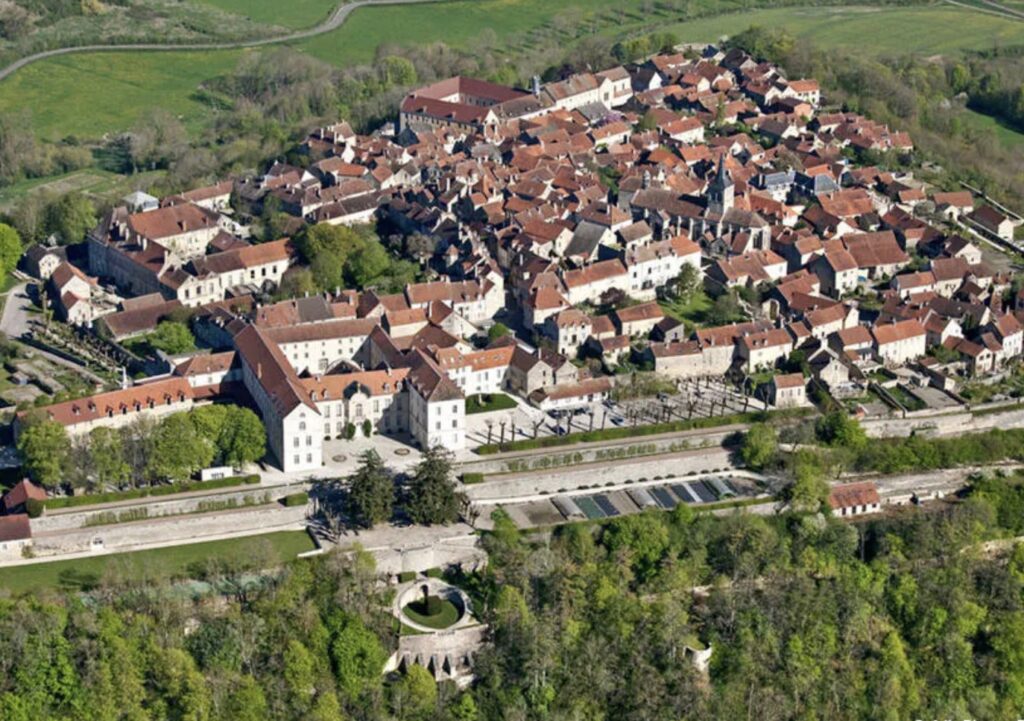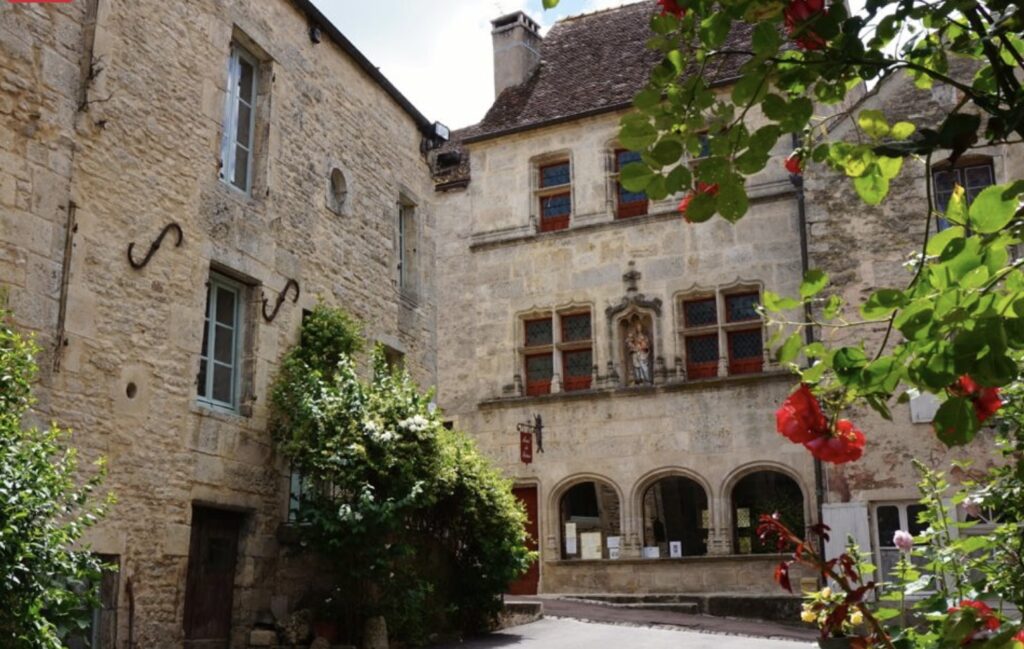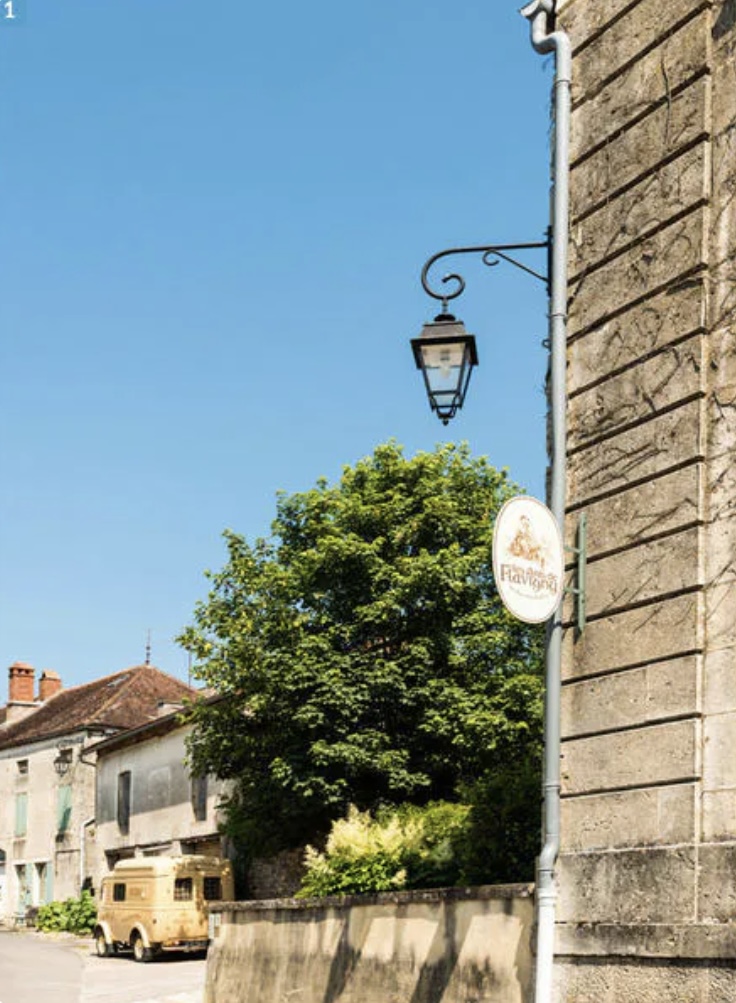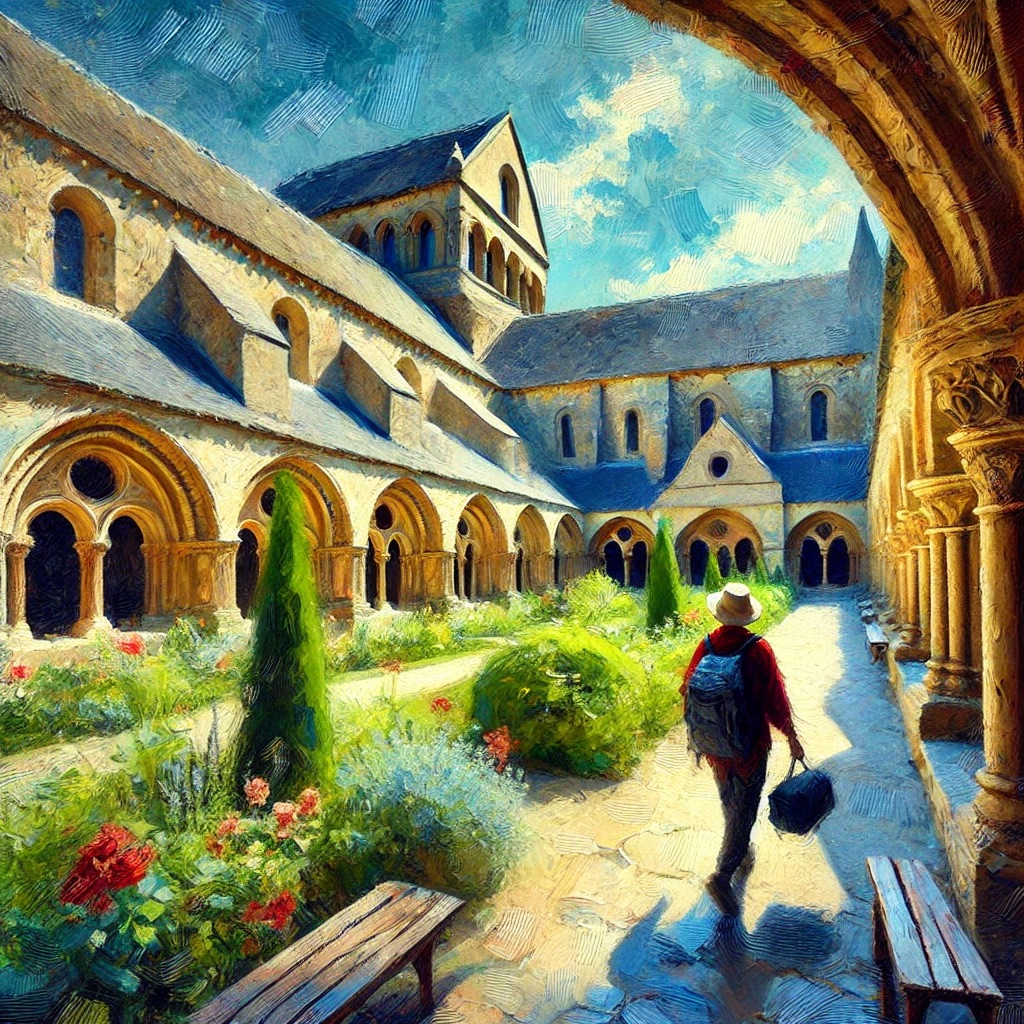ChatGPT:The Abbey of Fontenay, located in the Bourgogne-Franche-Comté region of France, is a former Cistercian monastery founded in 1118 by Saint Bernard of Clairvaux. It is one of the oldest and most complete Cistercian abbeys in Europe. The abbey is set in a picturesque valley near the town of Montbard and is renowned for its Romanesque architecture.
This is a UNESCO World Heritage Site, recognized for its historical significance and well-preserved medieval architecture.
The Abbey has a rich history that reflects its significance in the Cistercian order and its impact on the region.
Origin
- Foundation: The Abbey was founded in 1118 by Saint Bernard of Clairvaux, a prominent Cistercian monk and reformer, who sought to establish a monastic community adhering strictly to the Rule of Saint Benedict. The site was chosen for its seclusion and natural resources, ideal for a life of prayer and self-sufficiency.
Early History and Development
- Construction: Initial construction began soon after its foundation, with the abbey church being completed by 1147. The architecture reflects the Cistercian ideals of simplicity and austerity, avoiding elaborate decoration in favor of functional and spiritual spaces.
- Growth: The Abbey quickly grew in prominence, attracting numerous monks and lay brothers. Its remote location and self-sustaining economy, based on agriculture, milling, and metalworking, allowed it to thrive.
Medieval Period
- Economic Activities: The Abbey was notable for its industrial activities, particularly its forge, which is one of the oldest preserved in Europe. The monks were skilled in metalworking, contributing to the local economy.
- Cultural Influence: The Abbey became a center of religious life and learning. Its scriptoria were active in producing manuscripts, and it played a role in the dissemination of Cistercian spirituality and practices.
Decline and Suppression
- 15th-16th Centuries: Like many monastic institutions, the Abbey of Fontenay experienced decline due to a variety of factors, including economic difficulties and the general waning influence of monasticism in Europe.
- French Revolution: The final blow came during the French Revolution, when the abbey was seized and sold off as national property. The monastic community was disbanded, and the buildings were repurposed for industrial use.
Modern Period and Restoration
- 19th Century: In 1820, the Abbey was purchased by Edme Bochet, who initiated restoration efforts. Subsequent owners continued these efforts, gradually restoring the Abbey to its former glory.
- 20th Century: The Abbey was recognized for its historical and architectural significance, leading to its designation as a UNESCO World Heritage Site in 1981. Restoration efforts have focused on preserving its medieval structures and ambiance.
- Today: The Abbey of Fontenay is open to the public, offering a glimpse into medieval monastic life and Cistercian architecture. It remains one of the best-preserved examples of a Cistercian monastery, attracting visitors from around the world.
The Abbey of Fontenay stands as a testament to the enduring legacy of the Cistercian order, reflecting the religious, economic, and cultural history of medieval Europe.
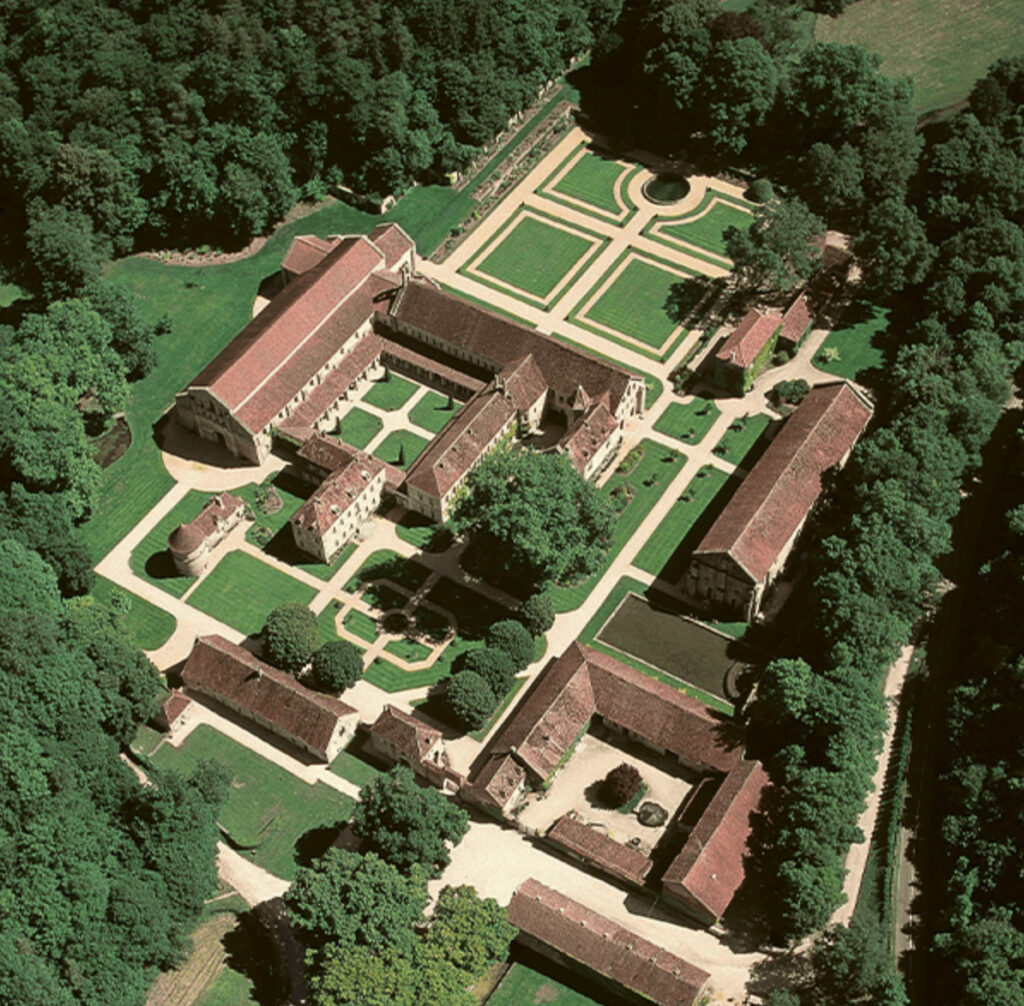
The Abbey had a significant influence on the architectural development of other monastic sites across Europe. The Cistercian order, founded in the 11th century, emphasized simplicity, austerity, and functionality in their buildings, which contrasted with the more ornate styles of the time. This architectural style spread widely due to the rapid expansion of the Cistercian order. Here are some key influences:
Architectural Features
- Simplicity and Austerity:
- The Cistercian architecture at Fontenay emphasized simplicity and the rejection of superfluous decoration, which was a direct reaction against the elaborate Romanesque and Gothic styles prevalent in other monastic orders.
- This focus on functional design over ornamentation influenced the construction of numerous Cistercian abbeys throughout Europe.
- Romanesque Elements:
- The use of Romanesque features such as rounded arches, barrel vaults, and massive stone walls was prominent in Fontenay and became a standard in other Cistercian buildings.
- Layout and Planning:
- The standardization of monastic layouts, including the arrangement of the church, cloister, chapter house, dormitory, and other essential buildings around a central courtyard, became a model for other abbeys.
- The emphasis on self-sufficiency led to the inclusion of ancillary buildings like forges and mills, which were also replicated in other Cistercian sites.
Influence on Specific Regions
- France:
- Other Cistercian abbeys in France, such as Clairvaux and Le Thoronet, followed the architectural principles seen at Fontenay, reinforcing the order’s distinctive style within the country.
- United Kingdom:
- The influence spread to the UK with the establishment of abbeys like Fountains Abbey and Rievaulx Abbey, which incorporated the simplicity and functional design seen at Fontenay.
- These abbeys also adopted the characteristic layout, including the arrangement of the church and cloister.
- Germany:
- Cistercian architecture in Germany, such as Eberbach Abbey and Maulbronn Monastery, shows clear influences from Fontenay in terms of austere design and practical layout.
- The emphasis on unadorned spaces and robust construction is evident in these sites.
- Spain:
- In Spain, the Cistercian style influenced abbeys like Poblet Monastery and Santes Creus Monastery, which display the characteristic simplicity and structural clarity.
- The use of local materials and adaptation to the Spanish climate and landscape still maintained the fundamental Cistercian principles.
- Italy:
- Italian Cistercian abbeys, such as Chiaravalle Abbey and Fossanova Abbey, reflect the architectural influence of Fontenay, blending it with local architectural traditions.
- The restrained decoration and functional design became integrated into the broader Italian monastic architecture.
Broader Architectural Impact
- Gothic Architecture: The transition from Romanesque to Gothic architecture in the Cistercian context saw the continuation of simplicity and functionality, influencing the early Gothic style. Cistercian churches often served as prototypes for early Gothic cathedrals.
- Secular Architecture: The principles of simplicity, clarity, and functionality seen in Cistercian architecture also impacted secular buildings, promoting a more utilitarian approach to architecture during the medieval period.
The Abbey played a pivotal role in spreading the Cistercian architectural style across Europe, leaving a lasting legacy on both religious and secular architecture with its emphasis on simplicity, functionality, and harmonious design.
The Abbey of Fontenay is well-preserved, with several key buildings remaining intact. The surroundings and these structures reflect the monastic community’s self-sufficient lifestyle and architectural elegance. Here are the main buildings and features of the Abbey and its surroundings:
Main Buildings
- Abbey Church:
- Architecture: A Romanesque structure with a Latin cross plan, characterized by its simple and austere design.
- Interior: Features a flat apse, barrel vaults, and minimal decoration, focusing on functionality and spirituality.
- Cloister:
- Layout: A quadrangular space surrounded by arcades, providing a peaceful area for meditation and walking.
- Design: The arcades are supported by columns, creating a harmonious and serene environment.
- Chapter House:
- Purpose: Used for daily meetings and administrative purposes.
- Structure: Features a vaulted ceiling supported by columns, with benches along the walls for the monks.
- Dormitory:
- Sleeping Quarters: A large hall where the monks slept, with a wooden roof and stone walls.
- Design: Reflects the communal and modest lifestyle of the monks.
- Scriptorium:
- Function: Used for copying and producing manuscripts.
- Design: A well-lit room with large windows to facilitate reading and writing.
- Forge:
- Industrial Use: One of the oldest preserved monastic forges in Europe, reflecting the abbey’s self-sufficiency.
- Operations: Used for metalworking, an important economic activity for the abbey.
- Infirmary:
- Healthcare: Provided care for sick and elderly monks.
- Structure: A simple building designed for practicality and comfort.
- Guesthouse:
- Hospitality: Used to accommodate visitors and pilgrims.
- Design: Modest and functional, in line with Cistercian values.
Surroundings
- Gardens:
- Layout: Beautifully landscaped gardens surrounding the abbey, providing a tranquil and picturesque setting.
- Function: Used for growing herbs, vegetables, and medicinal plants, contributing to the abbey’s self-sufficiency.
- Water Features:
- Streams and Ponds: The abbey is located near a stream, which provided water for various uses, including the forge and gardens.
- Design: The natural water features enhance the serene and contemplative atmosphere of the abbey.
- Monastic Cemetery:
- Location: A simple cemetery located near the abbey church.
- Design: Reflects the Cistercian focus on humility and simplicity, with unadorned graves.
- Agricultural Land:
- Usage: Surrounding fields were used for farming and raising livestock, ensuring the abbey’s self-sufficiency.
- Layout: Organized to maximize productivity while maintaining harmony with the natural landscape.
With its well-preserved buildings and serene surroundings, the abbey offers a comprehensive view of medieval monastic life and Cistercian architecture.
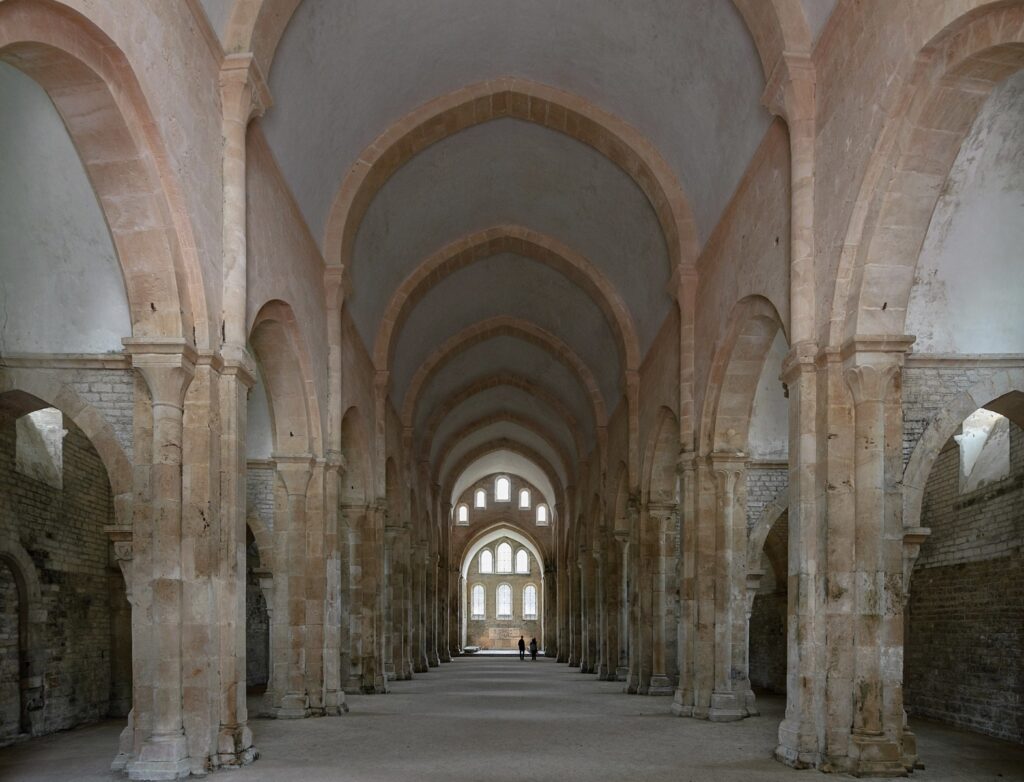
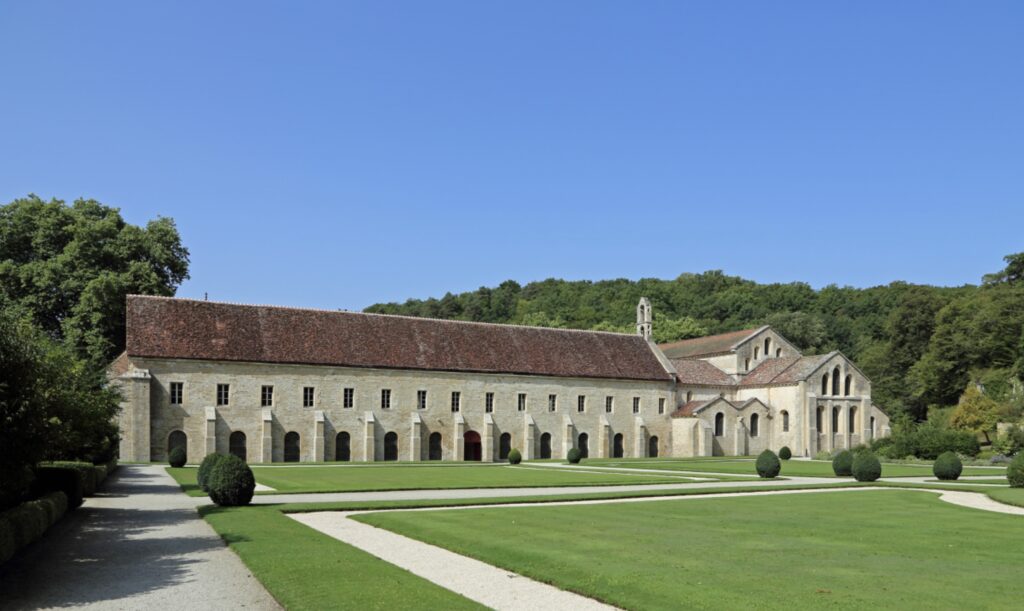
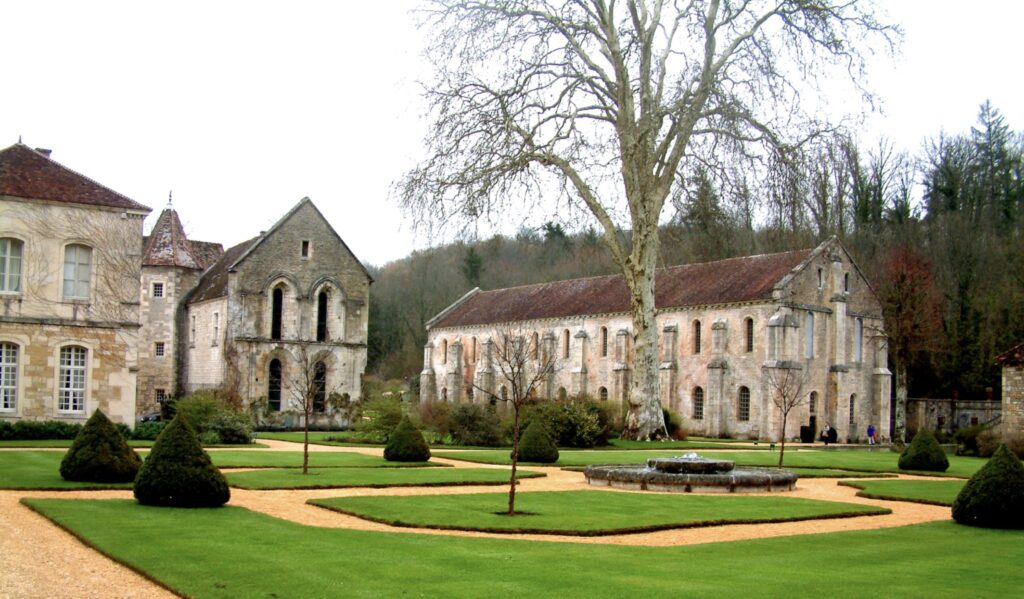
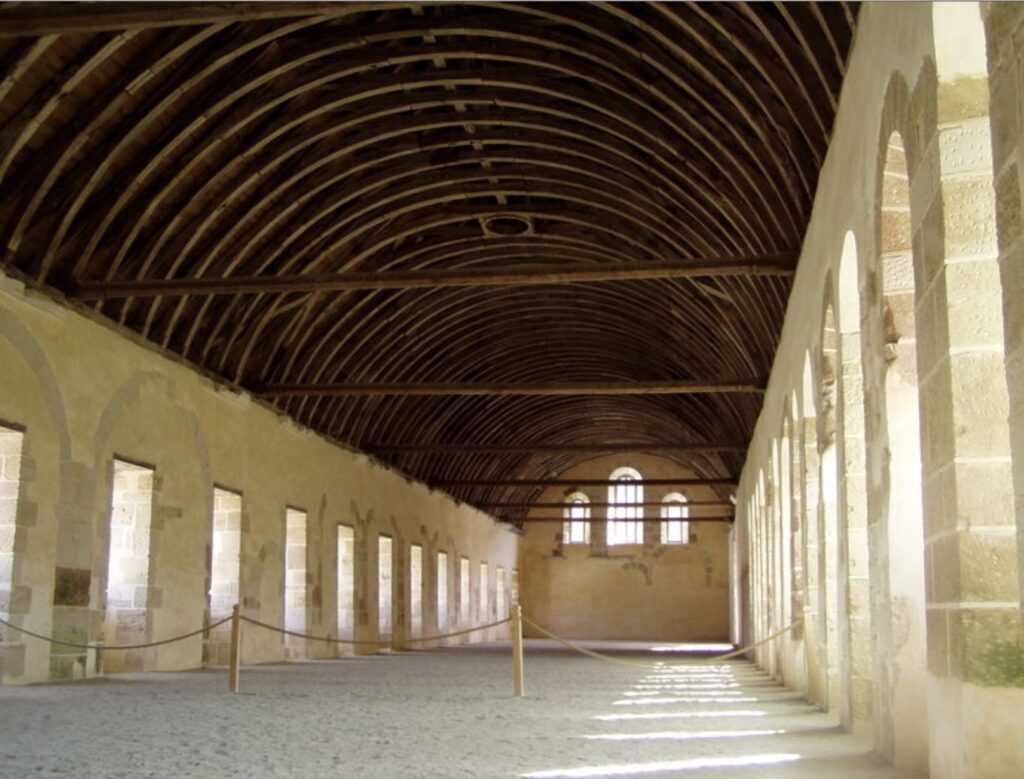
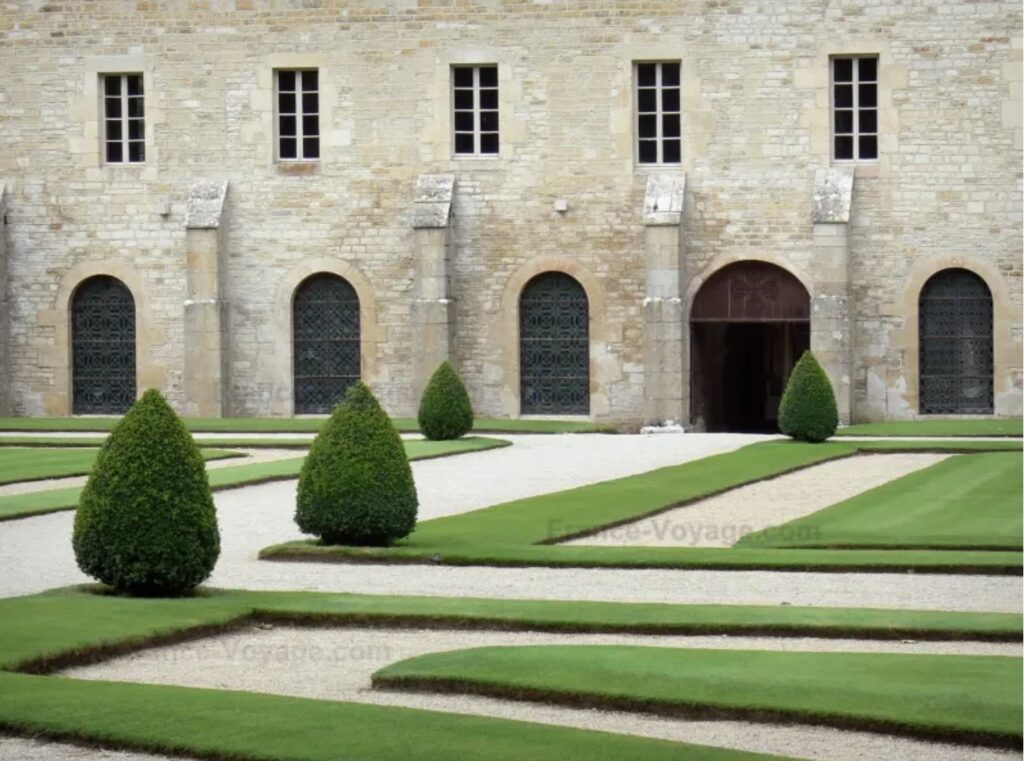
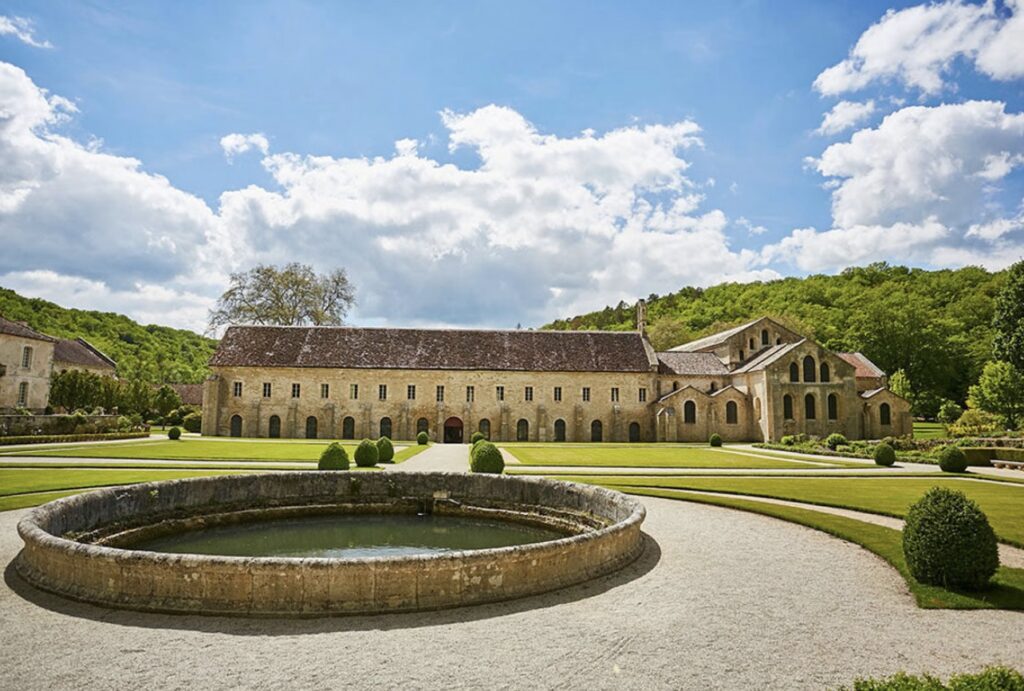
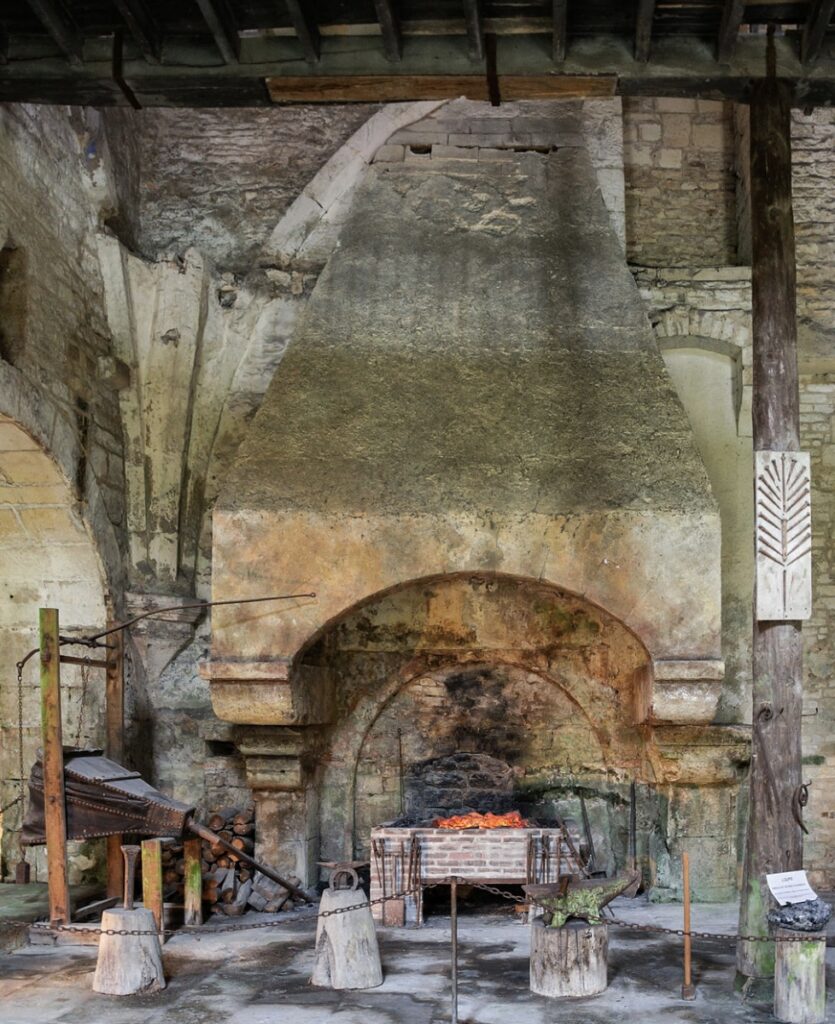
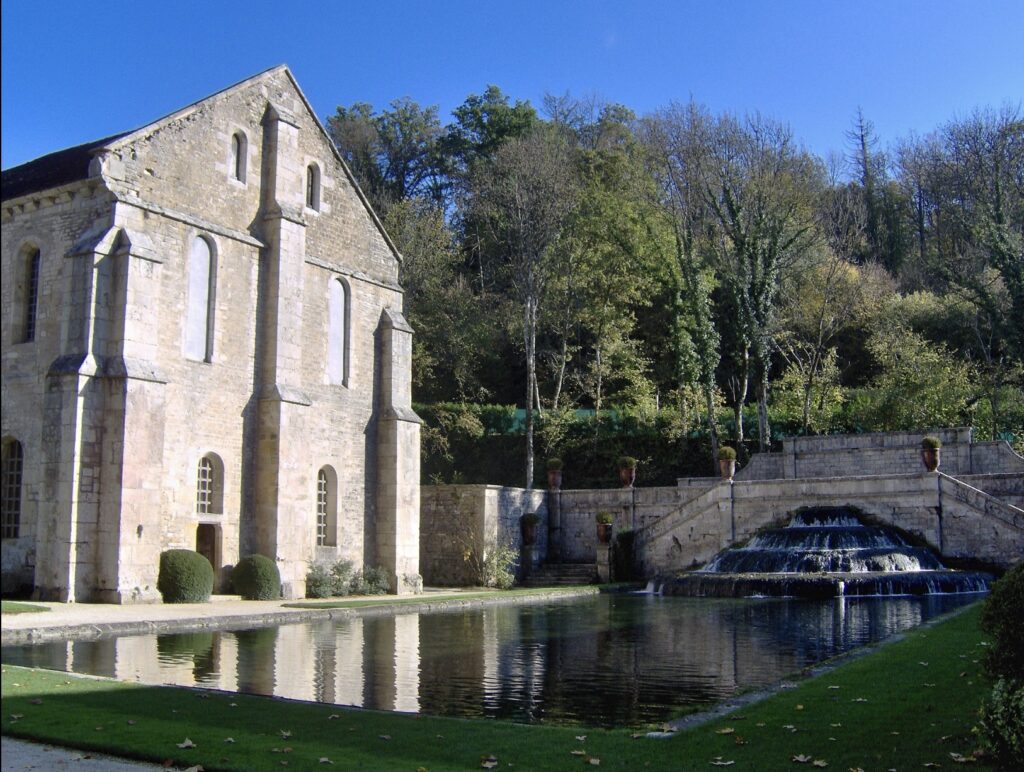
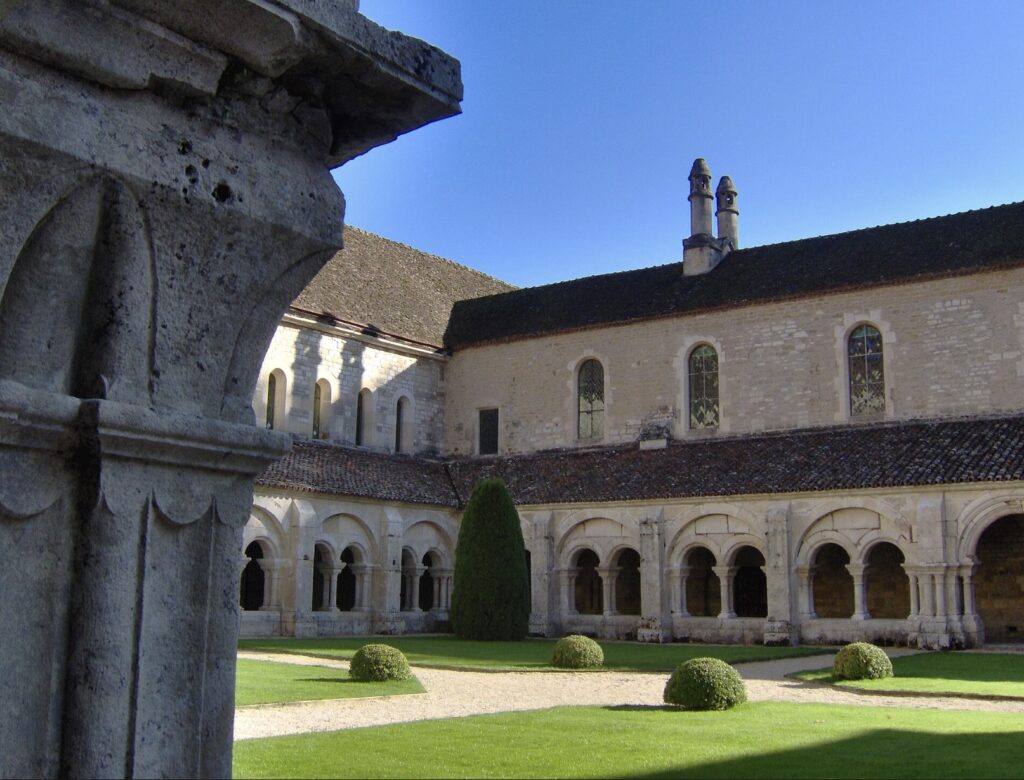
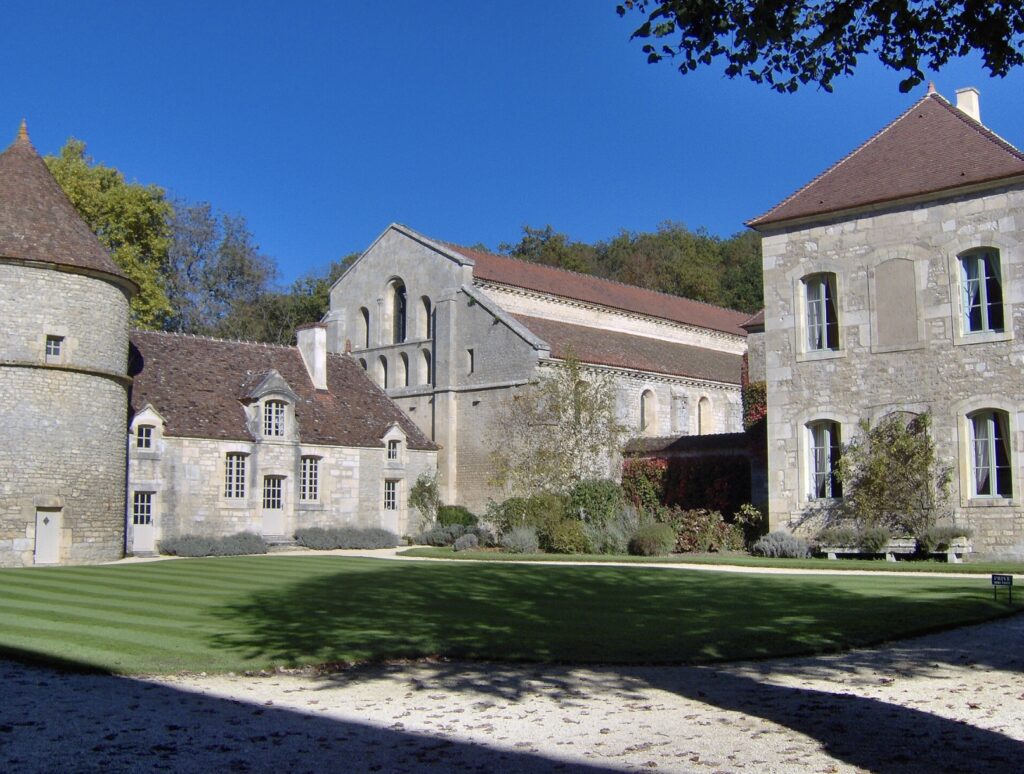
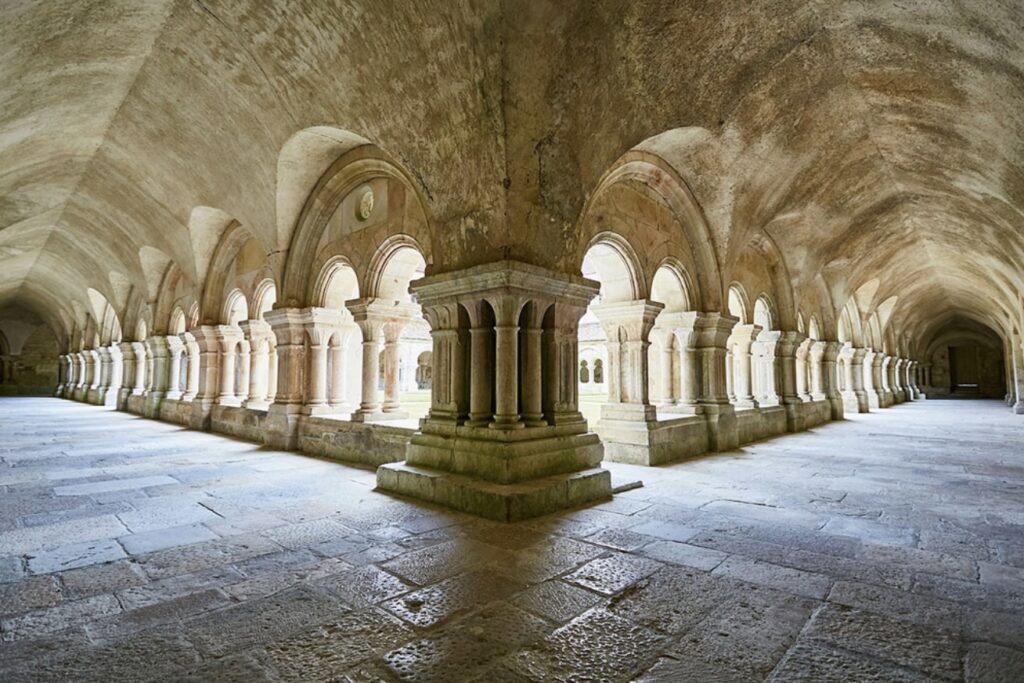
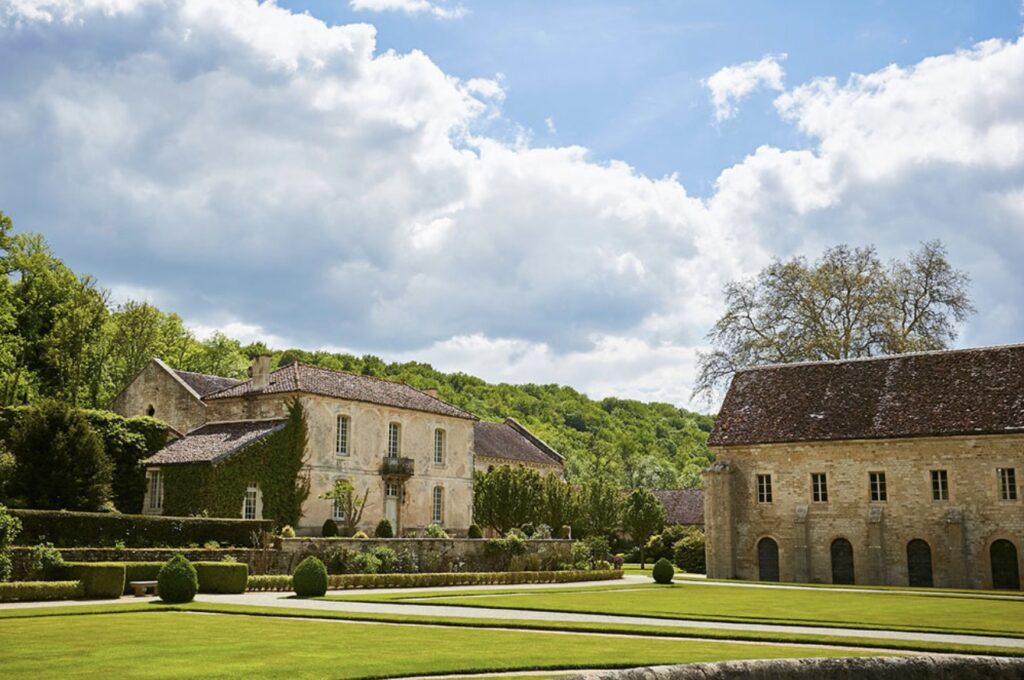
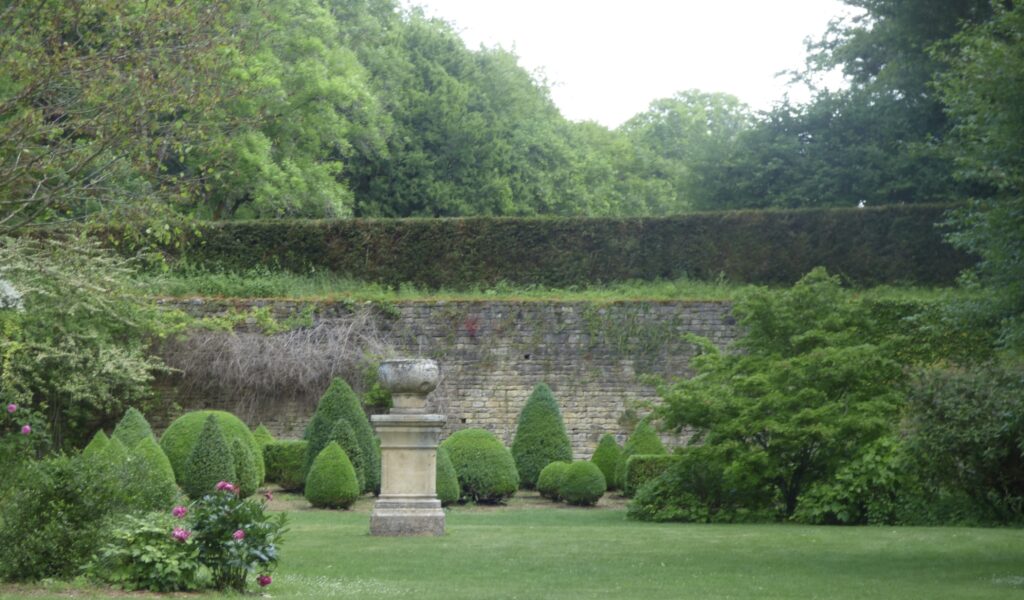
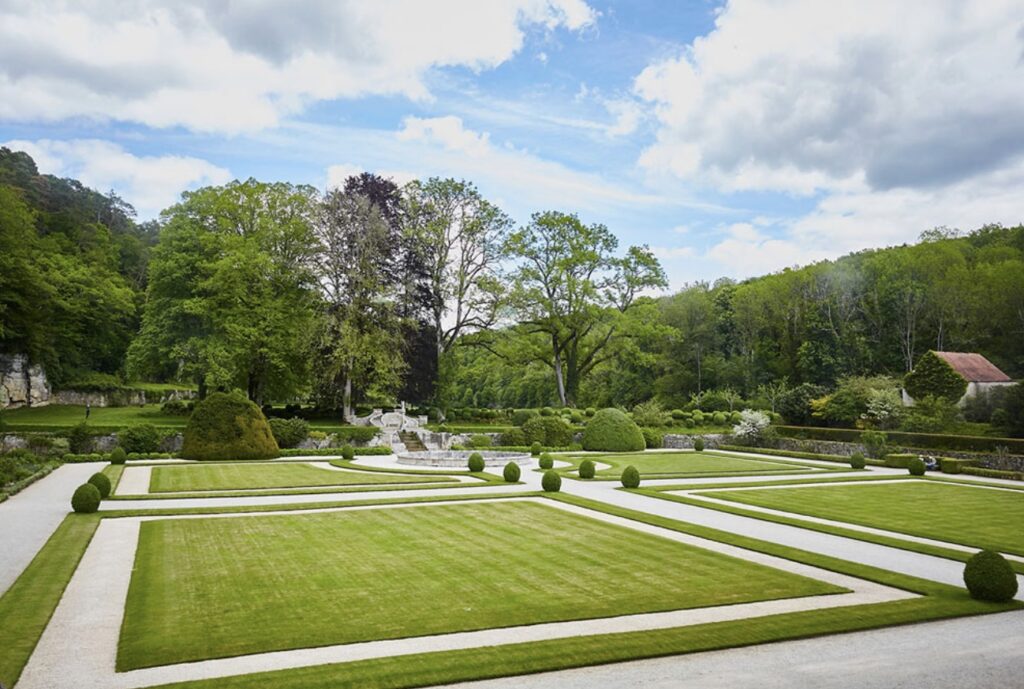
Additional Nearby Attractions
1. Alésia:
• Location: About 25 kilometers (16 miles) from the Abbey of Fontenay.
• Attraction: The site of the Battle of Alesia where Julius Caesar defeated the Gauls. Visit the MuséoParc Alésia to learn about this significant historical event.
2. Flavigny-sur-Ozerain:
• Location: Approximately 30 kilometers (19 miles) from the Abbey of Fontenay.
• Attraction: Known for its picturesque medieval streets and the Anis de Flavigny candy factory, producing anise-flavored candies since the 16th century.Combining a visit to the Abbey of Fontenay with a trip to Semur-en-Auxois or other nearby attractions provides a rich and varied experience, blending history, culture, and natural beauty.
